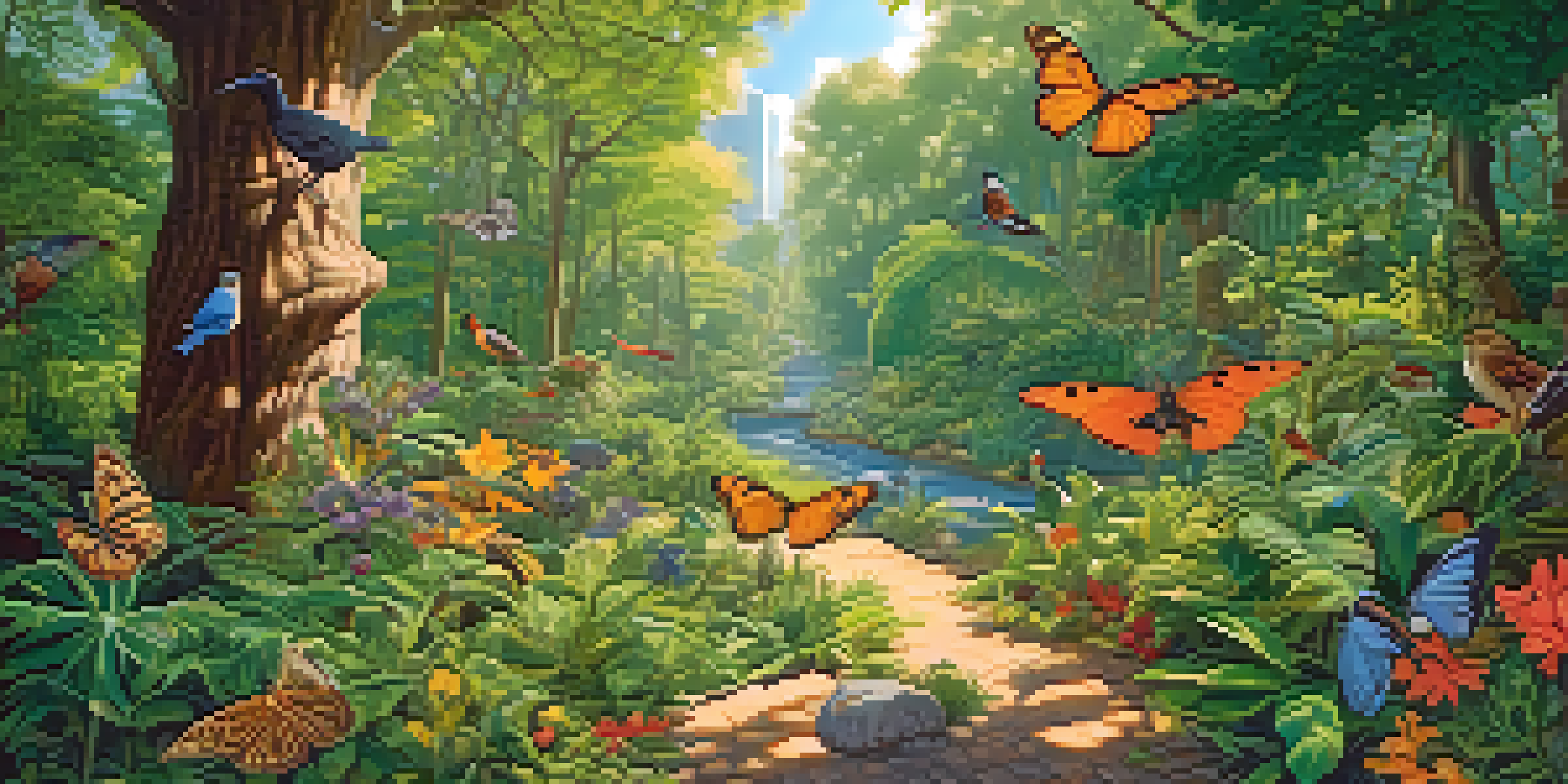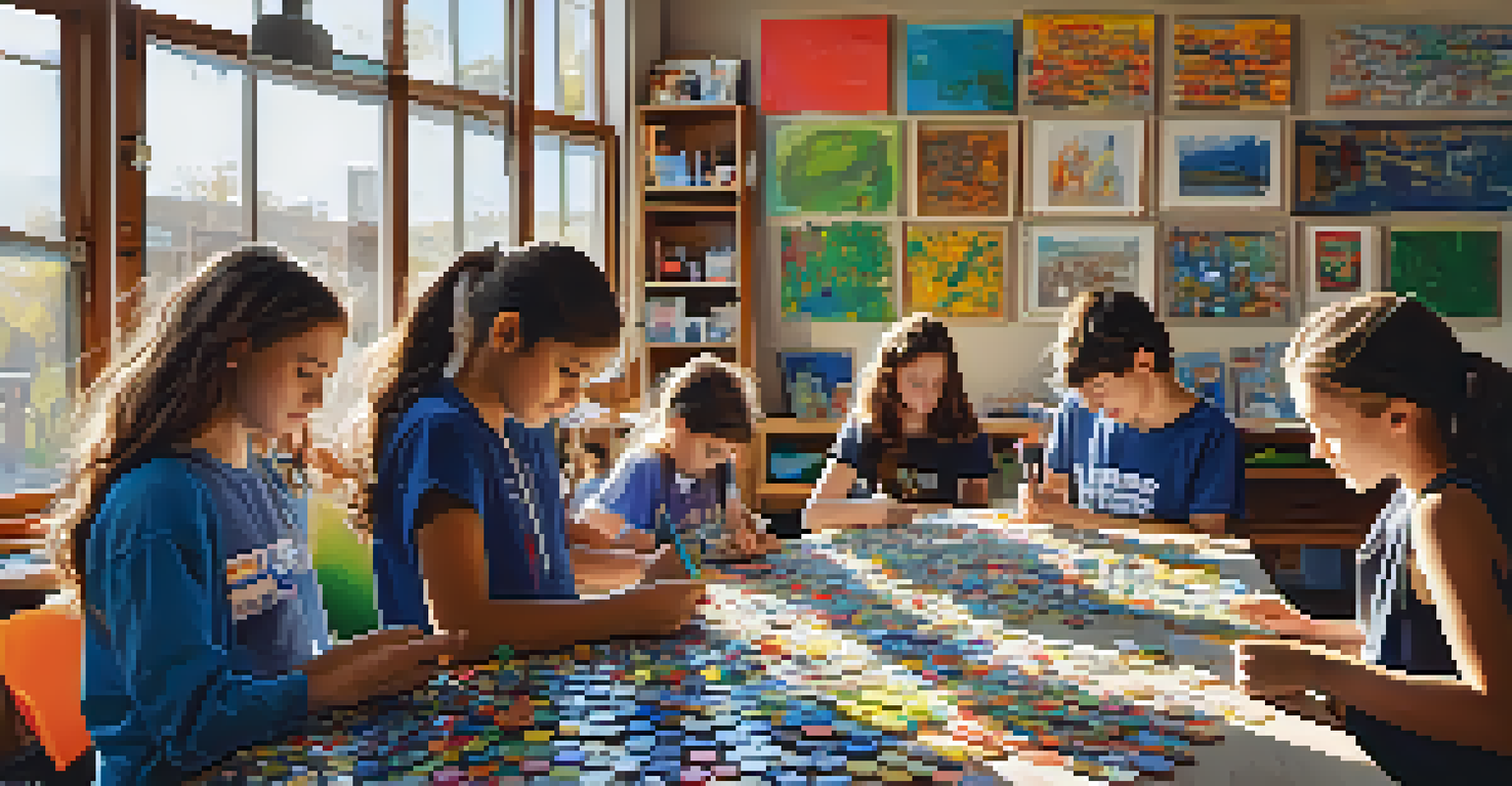The Role of Art Education in Promoting Sustainability

Understanding Art Education's Connection to Sustainability
Art education goes beyond simply teaching students to paint or draw; it plays a crucial role in fostering an awareness of sustainability. By integrating environmental themes into art projects, educators help students connect with the world around them. This connection prompts critical thinking about the impact of human actions on the environment.
Art is not a luxury; it's a necessity for understanding the world we live in, including our impact on the environment.
As students explore various materials and mediums, they often encounter discussions about resource use and waste, which are essential aspects of sustainability. For instance, a project using recycled materials not only sparks creativity but also instills the value of upcycling. This hands-on experience can lead to a deeper understanding of ecological footprints.
Ultimately, art education encourages students to express their thoughts on sustainability visually, making complex ideas more approachable. Through their artwork, students can share messages about conservation, biodiversity, and environmental stewardship, driving home the importance of these issues in a relatable way.
Cultivating Environmental Awareness Through Creativity
Creativity is a powerful tool for teaching environmental awareness. Art education invites students to think outside the box and explore innovative solutions to pressing ecological issues. By engaging with art, students can visualize concepts like climate change and habitat destruction, making them feel more real and urgent.

For example, a student might create a mural depicting the effects of deforestation, sparking conversations among peers. These projects can lead to collaborative efforts within the school and community, amplifying the message of sustainability. Such creative expressions not only educate but also inspire collective action.
Art Education and Sustainability
Art education fosters environmental awareness by integrating sustainability themes into creative projects.
Moreover, art fosters emotional connections to environmental issues. When students pour their feelings about nature into their work, they develop a sense of responsibility towards the planet. This emotional engagement is often a catalyst for lifelong commitment to sustainable practices.
Promoting Critical Thinking and Problem Solving
Art education encourages students to ask questions and think critically about their surroundings. When students engage in projects focused on sustainability, they learn to analyze problems from multiple perspectives. This critical thinking is essential for developing innovative solutions to environmental challenges.
Creativity is the power to connect the seemingly unconnected, and through art, we can find innovative solutions to our most pressing challenges.
For instance, when tasked with creating art from found objects, students must consider the environmental implications of their choices. They learn to balance aesthetics with sustainability, weighing the benefits of reusing materials against the desire for new supplies. This process fosters a mindset geared toward solving real-world issues.
As students tackle these challenges, they gain valuable skills that transcend the art classroom. They become more adept at collaboration, communication, and creative problem-solving—all of which are essential in addressing global sustainability efforts.
Building Community Awareness and Engagement
Art education can serve as a bridge between schools and communities, fostering greater awareness of sustainability issues. When students showcase their environmentally themed artwork, they engage with community members, sparking conversations about local environmental challenges. This outreach helps to build a shared commitment to sustainability.
Community art projects, such as murals or installations, can transform public spaces and highlight important ecological messages. These collaborative efforts often bring together diverse groups, creating a sense of unity and shared purpose. As a result, art becomes a platform for advocacy and change.
Creativity Sparks Environmental Action
By using art to visualize ecological issues, students are inspired to engage in community discussions about sustainability.
Furthermore, such initiatives encourage local organizations to support educational programs focused on sustainability. When communities see the impact of student artwork, they may be more inclined to invest in future projects that promote environmental education and activism.
Incorporating Indigenous Perspectives in Art Education
Integrating indigenous perspectives into art education enriches students' understanding of sustainability. Many indigenous cultures have long-standing practices that prioritize harmony with the environment. By learning about these traditions, students gain insights into sustainable living and the importance of biodiversity.
Art projects that highlight indigenous knowledge can foster respect for different ways of viewing the world. For example, students might create artworks inspired by traditional ecological practices or explore storytelling through visual means. This approach not only broadens their artistic repertoire but also deepens their appreciation for diverse cultures.
Moreover, incorporating these perspectives encourages critical dialogues about colonization, land use, and environmental justice. By understanding these complex issues, students become more informed advocates for sustainability, equipped to address both local and global challenges.
Fostering Innovation Through Sustainable Art Practices
Sustainable art practices push the boundaries of creativity, encouraging students to innovate responsibly. By using eco-friendly materials and techniques, young artists learn about the environmental impacts of their choices. This hands-on experience cultivates a mindset geared towards sustainability in their future endeavors.
For example, students might experiment with natural dyes or biodegradable materials, sparking discussions about sustainability in the art world. These creative explorations not only enhance their skills but also instill a sense of responsibility for the environment. They learn that art can be both beautiful and sustainable.
Indigenous Perspectives Enhance Learning
Incorporating indigenous knowledge into art education enriches students' understanding of sustainability and biodiversity.
As students embrace these innovative practices, they are likely to carry these values into their careers. Whether they become artists, designers, or educators, their commitment to sustainability can influence entire industries, reinforcing the idea that creativity and environmental stewardship can coexist.
The Future of Art Education and Sustainable Development
The future of art education lies in its ability to adapt and respond to the pressing issues of sustainability. As environmental challenges continue to grow, integrating sustainability into art curricula will become increasingly important. Educators will need to find innovative ways to inspire students to engage with these topics creatively.
This shift may involve collaborating with environmental organizations, creating interdisciplinary projects, or incorporating technology and digital media. By embracing these changes, art education can become a powerful tool for driving awareness and action on sustainability. Students will be better equipped to tackle the challenges they will face in the future.

Ultimately, a strong foundation in art education can empower the next generation to be influential advocates for sustainability. By fostering creativity, critical thinking, and a sense of responsibility, we can inspire a more sustainable world through the lens of art.